#Gilbert Seldes
Text
Nel 1924 il fumetto si è già strutturato come industria
Nel 1924 il fumetto si è già strutturato come industria
Yellow Kid. Fonte: Wikipedia
I Katzenjammer Kids, Bibì e Bibò in Italia
Una celebre immagine di Krazy Kat
È importante considerare come a quest’altezza temporale l’industria dei comics sia già strutturata; il lavoro dei primi artisti, come Outcault, Dirks, Verbeek, Feininger, McCay, Swinnerton, Bud Fisher e altri, ha perfezionato e regolamentato le strutture semiotiche del linguaggio in un…
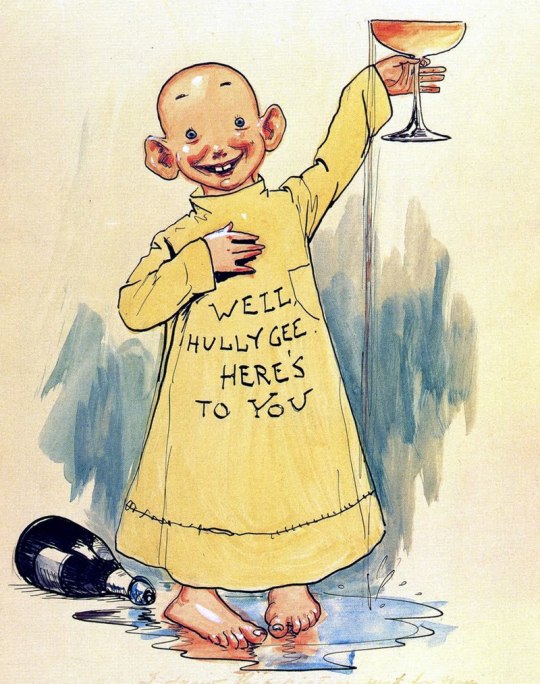
View On WordPress
#1924#1938#1941#1942#Alley Oop#animati#Buck Rogers#cartografia#cartoni#comic book#Coulton Waugh#Dick Calkins#Dick Tracy#fumetto#George Herriman#Gilbert Seldes#Hal Foster#Katzenjammer Kids#King Features Syndicate#Krazy Kat#Lorenzo Di Paola#Mandrake#Martin Sheridan#Max und Moritz#medium#New York World#newspaper strip#Philip Nowlan#Superman#Syndacate
2 notes
·
View notes
Text
An Industrial Classicist
Above: Walter Dorwin Teague's design for Kodak's "Brownie" camera, circa 1930. (Milwaukee Art Museum)
Walter Dorwin Teague pioneered industrial design as a profession, firmly believing that great, heirloom-quality design could be available to all, and that even mass-produced objects could be beautiful if they possessed “visible rightness.”
Dec. 15, 1934 cover by William Cotton.
Cultural critic…

View On WordPress
#Abe Birnbaum#Barbara Shermund#Christmas 1934#Daniel &039;Alain&039; Brustlein#Douglas Fairbanks Sr#George Price#Gilbert Seldes#Jack Markow#James Thurber#John Mosher#Lewis Mumford#The Private Life of Don Juan#Walter Dorwin Teague#William Cotton#William Crawford Galbraith
0 notes
Text

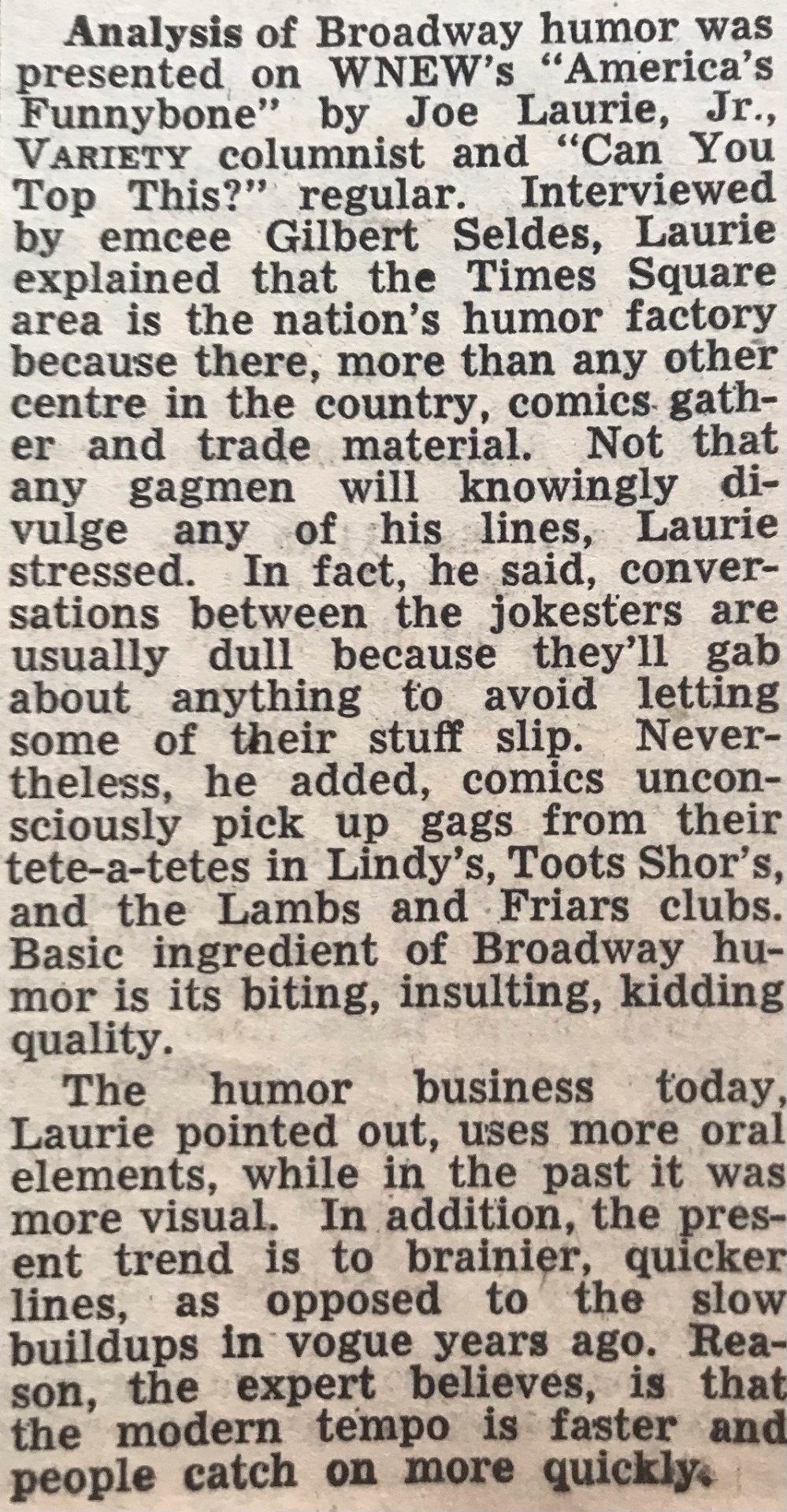

1950.
Radio WNEW.
Gilbert Seldes interviewed old comedian Joe Laurie Jr. about the state of modern comedy.
1 note
·
View note
Text
#modernism#graphic novel#comic strips#comics#James joyce#dadaism#surrealism#pablo picasso#George herriman#Krazy Kat#cartoon animation#arizona#coconino#1917#William Hearst#Gilbert Seldes#Hemingway#Gertrude Stein#Ignatz#officer pupp#theglobalnovelpodcast#Claire hennessy
0 notes
Text
The simplest of the three major experiments is known in brief as 'facsimile.' It is an extension, in effect, of the process by which a photograph of a bomber fallen over London is ‘cabled’ or ‘wirelessed’ to the AP Building, Rockefeller Center, New York, and is relayed to newspapers all over the United States. Facsimile proposes, most dramatically, to send you a photograph of a daily paper; it will be printed, so to speak, in and by your receiver during the night. In the morning, you will have it at hand. The stylus which ‘writes’ the copy may make as many as a hundred strokes for one inch of the facsimile newspaper; so the process is still slow, and the ‘newspaper’ you receive may be rather smaller than the one you buy at a news stand. This is not, however, inherent in the method.
-- Radio for the Future, Gilbert Seldes, The Atlantic, 1941
(Radiofax newspapers were briefly a thing and fizzled not because they didn't work but because most people didn't want to buy a $$ appliance to print a smaller newspaper. Radiofax in general was almost entirely displaced by television (had its beginnings at the same time), telefax/regular fax (telegraph faxing hugely pre-dated radiofax, radiofax was new and exciting because it was wireless, and then telephone faxing is the ubiquitous "fax" of today), and the internet, though it's used to this day for some stuff like maritime weather, so the more you know.)
#as (ha) telegraphed. more radio historyposting for the new year.#will be tagged so you can avoid it if you're not interested in radio history lmao#radio#radio history#radio for the future gilbert seldes#1941#edited because i forgot to include. like. regular fax. in the little list#which actually predates radiofax if you're talking about teleGRAPH faxing!#and then radiofax is new and exciting because it's wireless#but television is becoming a thing around the same time#and then telePHONE faxing is the ubiquitous fax machines of the 1980s to today
3 notes
·
View notes
Text
THIS DAY IN GAY HISTORY
based on: The White Crane Institute's 'Gay Wisdom', Gay Birthdays, Gay For Today, Famous GLBT, glbt-Gay Encylopedia, Today in Gay History, Wikipedia, and more … November 25

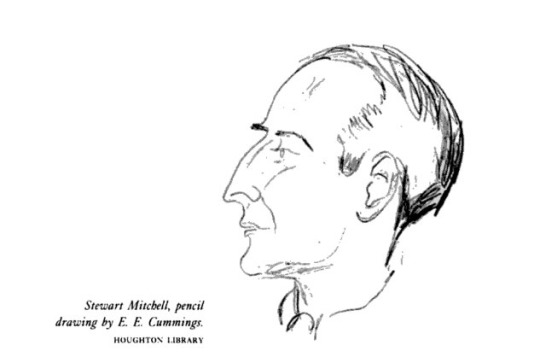
1892 – Stewart Mitchell (d.1957) was an American poet, editor, and professor of English literature. Mitchell’s editorship of The Dial magazine signaled a pivotal shift in content from political articles to aesthetics in art and literature.
Mitchell was born in Cincinnati, Ohio. After graduating from Harvard University in 1916 he taught English literature at the University of Wisconsin. He resigned his position for political reasons, frustrated that he was forced to give a "politician's son who should have been flunked" passing grades. Mitchell enlisted in the army, serving in France until he was discharged as a private two years later.
Mitchell returned to the United States and was hired by Scofield Thayer and James Sibley Watson as managing editor of their joint project, The Dial. Mitchell, in association with Gilbert Seldes, was managing editor from 1919-1920. His appointment as editor marked a shift in the influential, modernist little magazine’s focus on politics to an artistic, literary theme.
Mitchell’s work for The Dial involved not only editing but, as was common with the majority of The Dial's editors, active involvement with and submissions to the creative or literary content.
Mitchell’s associating with The Dial proved advantageous and profitable to his own literary career. He completed and sold a volume of poetry that was published in 1921. Several of the poems in his collection were first printed in The Dial. These were reprinted with permission from Scofield Thayer. Following Mitchell’s resignation as editor, he continued to submit book reviews as well as poetry.
His desire to travel led Mitchell to give up editorship of The Dial and pursue further education abroad. In 1922, following two years’ study at the University of Montpellier and Jesus College, Cambridge, he returned to the States and lived with his elderly aunt in New York. Mitchell privately studied foreign language and literature, focusing on French and Greek, before returning to Harvard and graduating with a Ph.D. in Literature in 1933.
While completing his degree he also worked as editor for the New England Quarterly in 1928. The following year he gave up his position to become editor for the Massachusetts Historical Society. It was as a historical editor that Mitchell, according to his associates, truly excelled. His "naturally keen memory and sharp eye, coupled with a sure ear for words and an occasionally brilliant wit, permitted him to excel." After eleven years' service he resigned but was recalled in 1947 as Director and editor.
Mitchell's long-time partner was Richard David Cowan (1909-1939), a student of Cornell University in the 1920s who met Mitchell in the 1930s and they lived together since then. When Mitchell died in Brookline, Massachusetts in 1957, he was buried alongside Richard Cowan, who had died before him.
While at Harvard in his youth, he befriended the poet e.e. cummings who drew the the above sketch of Mitchell.


1913 – Robert Friend (d.1998) was an American-born poet and translator. After moving to Israel, he became a professor of English literature at the Hebrew University of Jerusalem.
Friend was born in 1913 in Brooklyn, New York, to a family of Russian Jewish immigrants. He was the eldest of five children. After studying at Brooklyn College, Harvard and Cambridge, he taught English literature and writing in the U.S., Puerto Rico, Panama, France, England, and Germany. He settled in Israel in 1950, where he lived the rest of his life. He taught English and American Literature at the Hebrew University of Jerusalem for over thirty years. He was well known in Israel as an English-language poet and a translator of Hebrew poetry.
Robert Friend was gay, and his sexuality found expression in his poetry well before the Stonewall era. According to Edward Field in the Greenwood Encyclopedia of American Poetry, Shadow on the Sun is "remarkable in that, for its time, it contains so many poems about the author's homosexuality." Friend's openness continued throughout his writing career.


1942 – Rosa von Praunheim is a German film director, author, painter and gay rights activist. Openly gay, he is one of the initiators of the gay rights movement in Germany.
A prolific director, he has made over fifty feature films. He began his career associated to the New German Cinema as a senior member of the Berlin school of underground filmmaking.
Born Holger Mitschwitzki, he spent his early years in East Berlin. In 1953, he escaped from East Germany with his family to West Germany. In the 60s, he took the artistic female name Rosa Von Praunheim to remind people of the pink triangle that homosexuals had to wear in Nazi concentration camps.
A pioneer of Queer Cinema, von Praunheim has been an activist in the gay rights movement. He was an early advocate of AIDS awareness and safer sex, but has been a controversial figure even within the gay community. His films center on gay related themes and strong female characters. His works are characterized by excess and employ a campy style. His films have featured such personalities as Jayne County, Vaginal Davis, Divine, and Jeff Stryker.
Praunheim's first big feature film was produced in 1970: Die Bettwurst(The Bolsters), a parody of bourgeois marriage. It became a cult movie, which had a sequel in 1973 (Berliner Bettwurst). In the same year, he also caused a stir with his documentary It Is Not the Homosexual Who Is Perverse, But the Society in Which He Lives which led to several gay rights groups being founded.Praunheim has centered his directorial efforts in documentaries featuring gay related themes. In the early 1970s he lived for some time in the United States where he made a series of documentaries about post- Stonewall American gay scene. In Army of Lovers or Revolt of the Perverts (1972-1976) he took on the American gay and lesbian movement from the 1950's to 1976.
Back in Berlin he made feature films such as Red Love (1980), Our Corpses Are Still Alive (1981), and City of Lost Souls (1983). These films were shown in film festivals worldwide.
With the irruption of the AIDS epidemic, Praunheim worked in a tetralogy of AIDS themed documentaries. A Virus Knows No Morals (1985), was one of the first feature films about AIDS. The documentaries Positive and Silence = Death, both shot in 1989 deal with aspects of AIDS activism in New York. Fire Under Your Ass (1990) focuses about AIDS in Berlin.
In Germany Rosa was very vocal in his efforts to educate people about the danger of AIDS and the necessity of practicing Safer Sex. These efforts alienated many gays who came to consider him a moralistic panic-monger. He would remain a highly controversial figure in his native country. On 10 December 1991 Praunheim created a scandal in Germany when he outed, among others, the anchorman Alfred Biolek, the comedian Hape Kerkeling and wrongly the actor Götz George in the TV show Explosiv - Der heiße Stuhl as gay. After the show several celebrities had their coming out. In 1999 he made Geisendörfer Medienpreis for Wunderbares Wrodow, a documentary about the people in and around a German village and its castle.
He lives in Berlin with his companion and assistant Oliver Sechting.

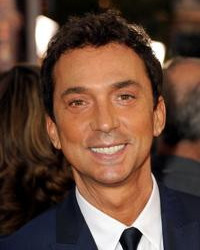
1955 – Bruno Tonioli is an Italian-born British choreographer and TV personality who appears as a judge on the television dance competition Strictly Come Dancing for BBC TV in the UK, and its American adaptation Dancing with the Stars on ABC TV in the US, Tonioli co-created and appeared on the BBC talent show DanceX and its short-lived American adaptation, Dance War: Bruno vs. Carrie Ann.
Born in Italy, Tonioli is fluent in Italian, English, Portuguese, Spanish, and French.Tonioli is openly homosexual, and has spoken of the homophobic bullying he suffered in his youth.
In the early 1970s, Tonioli was a member of the Paris-based company La Grande Eugène and later joined the Lindsay Kemp Company. He worked extensively as a freelance dancer, including an appearance in Elton John's "I'm Still Standing" video.
Tonioli has worked in the music business as a choreographer for music videos, stage shows, and tours for artists such as Tina Turner, Sting, Elton John, The Rolling Stones, Freddie Mercury, Sinitta, Boy George, and Duran Duran. His close association with Bananarama produced many videos, from "Venus" to "Movin' On". Tonioli choreographed the band Arcadia's music video for their song "Election Day" as documented in a 1980s documentary entitled The Making of Election Day.Tonioli's motion picture credits include Ella Enchanted, The Gathering Storm, Little Voice, Dancin' thru the Dark, Enigma, The Parole Officer, and What a Girl Wants. His television film credits include Miss Marple The Body in the Library, Blonde Bombshell, Scarlet Pimpernel and The Bare Necessities. Theatre credits include La Vie Parisienne, Godspell, Steve Coogan's show The Man Who Thinks He's It, and "Forbidden Passion" (BBC TV trilogy in 1985, entitled Oscar in the UK) playing manservant to Oscar Wilde (Michael Gambon).

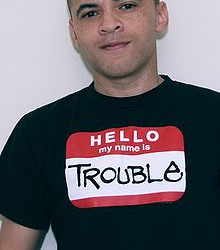
1968 – Craig Seymour is an American writer, photographer, celebrity interviewer, music critic and former stripper. He was born in Washington, D.C.. He has written for The Washington Post, Entertainment Weekly, Vibe, and Spin, among other publications, and has served as pop music critic for The Buffalo News and the The Atlanta Journal-Constitution. Heis now Associate Professor of Journalism at Northern Illinois University. He lives in Chicago.
He has interviewed and profiled some of the biggest names in music, including Janet Jackson, Mariah Carey, and Luther Vandross, who granted him numerous interviews. Seymour has also been a music analyst for CNN's Headline News.
As a graduate student at the University of Maryland in the 1990s, Seymour started frequenting and working in the strip clubs in Washington D.C. while writing his master's thesis: "Desire and Dollar Bills: An Ethnography of a Gay Male Striptease Club." He used these experiences to write the book All I Could Bare: My Life in the Strip Clubs of Gay Washington, D.C. Seymour stated that stripping gave him the confidence he needed to interview big stars like Mariah Carey.
In an interview with Dallas Voice, Seymour credited his stripping career with "the ease I had asking celebrities extremely personal questions, especially those having to do with sex and relationships. After all, when someone is playing with your dick in public, it's not only potentially awkward for you, the one being played with, it can also be weird for the person doing the playing, because he is exposing his desires so nakedly in front of other people."


1970 – Yukio Mishima (b.1925), homosexual Japanese author, commits seppuku (ritual suicide).

1997 – Ecuador legalizes same-sex sexual activity, overturning the previous Article 516 of the Penal Code that criminalized such acts.


11 notes
·
View notes
Text
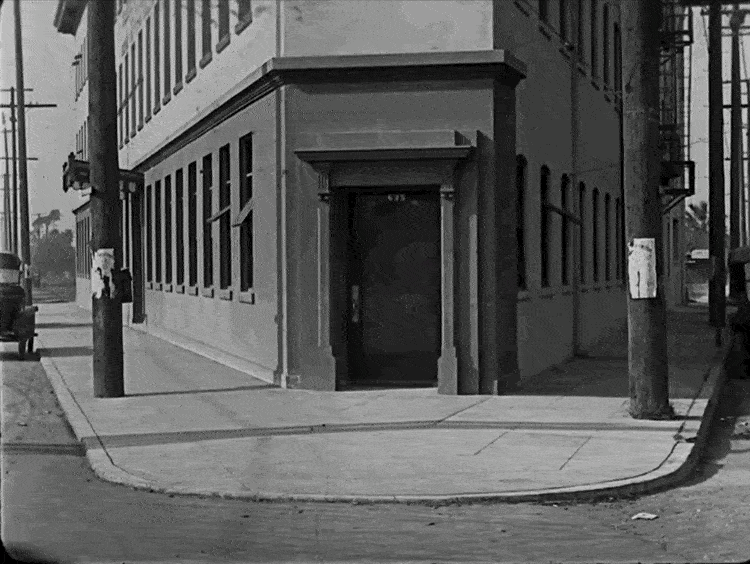

Cops is certainly the most serious (indeed, tragic) and possibly the greatest (or most thoroughly achieved) of all the Keaton two-reelers. it is a simple story, simply told, with implications on many levels.
In brief: it is one man against the police; it is man against fate; it is fate worked out through the machinelike hostility of man toward his fellow man; and it is fate inside the individual, in the ineradicable patterns of his own stupidity, so that it is man against himself.
Although no miracle comes to save Keaton, Cops itself is something of a miracle: the Kafkaesque tale is yet an unforgettably funny tale, a pure evocation of the world of Buster Keaton, as uniquely Keaton as The Gold Rush is uniquely Chaplin. It is a picture full of what Gilbert Seldes has called Keaton's "enormous, incorruptible gravity . . . intense preoccupation . . . hard sense of personality”.
In Cops, Buster himself, acting with the best of intentions, fetches disaster down upon his own head. So vehement, so vindictive, so utter is this final disaster that one can readily accept the idea of "roaring, destructive, careless energy" that Seides ascribed to the workings of slapstick. So fatally fitted into the chain of his ultimate destruction is every move that Buster makes that one is reminded of art historian Dr. Erwin Panofsky's description of Keaton the comedian as "imperturbably serious, inscrutable, and stubborn, who acts under the impulse of an irresistible power unknown to himself, comparable only to the mysterious urge that causes the birds to migrate Or the avalanche to come crashing down."
In Cops, as Seldes wrote “thousands of policemen rushed down one street; equal thousands rushed up another; and before them fled this small, serious figure, bent on self-justification, caught in a series of absurd accidents, wholly law-abiding, a little distracted."
A museum director, the late Dr. Jermayne MacAgy saw this visual symbol as uniquely Keaton.
“Buster Keaton's portrait, is not a close-up. It is Buster in a great empty space, facing you from far, far away. There he stands motionless for that one moment, waiting for his fate”.

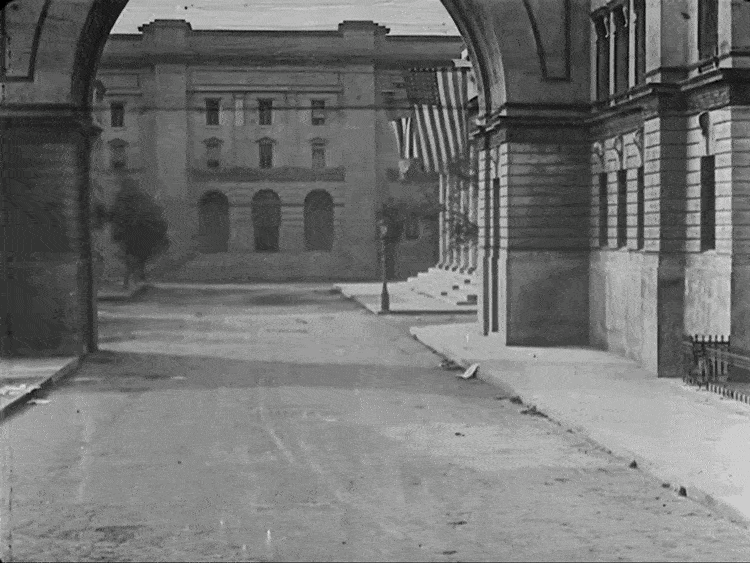
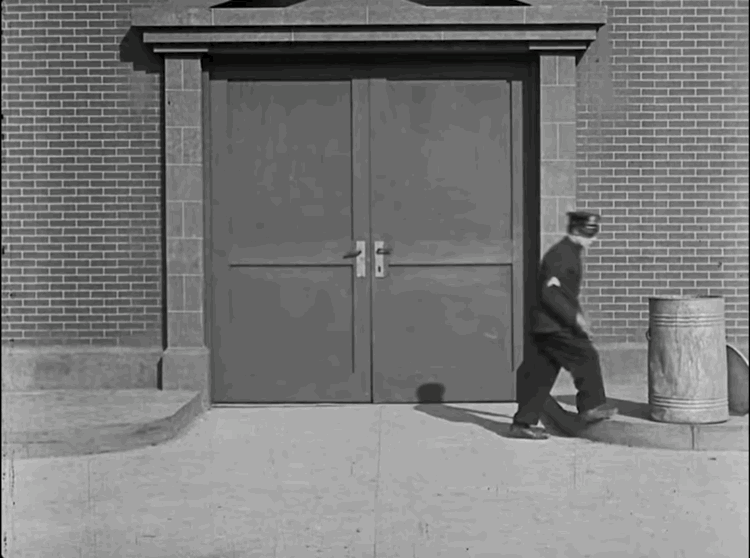
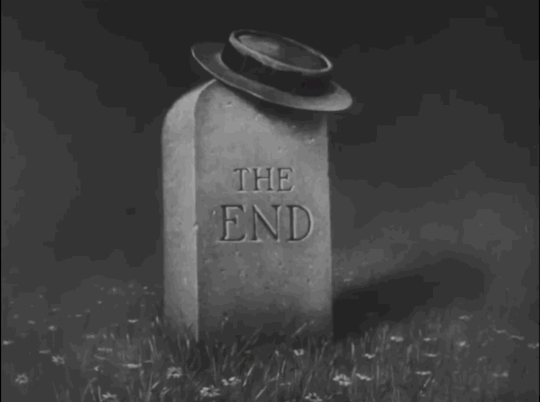
Cops 1922
Excerpt from Keaton by Rudi Blesh
#buster keaton#Rudi Blesh#silent movies#cops 1922#comedy#1920s#silent film#silent comedy#1920s cinema#hollywood#slapstick#filmmakers#silent movie stars#silent era#director
24 notes
·
View notes
Text
Early Television History - Broadcasts And Events.
1930:
July 14 – For the first time in the United Kingdom, a television drama is broadcast. The drama is a production of Luigi Pirandello's The Man With the Flower in His Mouth; it is broadcast by the BBC from Baird's studios at 133 Long Acre, London.
November 5 – Baird television transmissions at Hairdressing Fair of Fashion include the world's first television commercial for the Eugène Method of permanent hair waving.
December 7 – W1XAV in Boston, Massachusetts broadcasts the first television commercial in the United States, of I.J Fox Furriers during The Fox Trappers.
1934:
July 11 - In the U.S., the Communications Act of 1934 stipulates that commercial television stations "operate in the public interest, convenience, and necessity". The Federal Communications Commission (FCC) is charged with the responsibility of enforcing the act.
1937:
January 19 – BBC Television broadcasts The Underground Murder Mystery by J. Bissell Thomas from its London station, the first play written for television.
May – Gilbert Seldes becomes the first television critic, with his Atlantic Monthly magazine article, the "Errors of Television".
May 14 – The BBC broadcasts a thirty-minute excerpt of Twelfth Night, the first known instance of a Shakespeare play televised. Among the cast are Peggy Ashcroft and Greer Garson.
November 11 (Armistice Day) – BBC Television devotes the evening to a broadcast of Journey's End by R. C. Sherriff (1928, set on the Western Front (World War I) in 1918), the first full-length television adaptation of a stage play. Reginald Tate plays the lead, Stanhope, a rôle he has performed extensively in the theatre.
November 27 – NBC in the United States broadcasts the first of six live teleplays of The Three Garridebs (based closely on Arthur Conan Doyle's story "The Adventure of the Three Garridebs"), the first known television pilot, in which Louis Hector becomes the first actor to play Sherlock Holmes on television.
1938:
February 11 – BBC Television in England broadcasts the first ever television science-fiction, a 35-minute adaptation of a segment of the play R.U.R. by the Czech playwright Karel Čapek.
May 14 – The first quiz show, Spelling Bee, is televised by the BBC.
June 7 – An excerpt from Susan and God is the first Broadway play with its original cast to be broadcast on television. Station W2XBS uses exact replicas of the stage sets, with Nancy Coleman, Gertrude Lawrence and Paul McGrath appearing on the broadcast.
November – Due to freak atmospheric conditions, a BBC TV broadcast from London is received in New York City. A film camera was used to record the silent images which included the performance of a play, a cartoon, and other matter. A four-minute excerpt from this filmed recording survives and is, as of 2014, considered the only surviving example of a pre-war BBC television transmission.
November 12 - NBC's W2XBS broadcasts what is the first telecast of an unscheduled event, a fire on Wards Island near Manhattan.
1939:
March 4 – The BBC Television Service broadcasts one of the first television plays specially written for the medium, Condemned To Be Shot by R. E. J. Brooke, live from its London studios at Alexandra Palace. The production is notable for the use of a camera as the first-person perspective of the play's unseen main character.
March 27 – The BBC broadcasts the entirety of Magyar Melody live from His Majesty's Theatre in London. The 175-minute broadcast is the first showing of a full-length musical by television.
April 30 – Franklin D. Roosevelt, appearing at the opening ceremony of the 1939 New York World's Fair, becomes the first President of the United States to give a speech that is broadcast by television.
May 3 – The Walt Disney cartoon Donald's Cousin Gus airs on NBC's experimental station W2XBS (later WNBC-TV) in New York. This marks the first movie cartoon to be televised in the United States.
November 23 – The earliest known live telecast of the Macy's Thanksgiving Day Parade is broadcast locally in New York.
0 notes
Text
Censorship On The Grounds Of Embarrassment - 1955 - Past Daily Reference Room
Censorship in Movies: Blackboard Jungle – A movie the State Department didn’t think depicted the America of 1955.
https://pastdaily.com/wp-content/uploads/2023/09/Gilbert-Seldes-Blackboard-Jungle-Censorship-issue-September-19-1955.mp3
Censorship in the Movies – Lecture by Gilbert Seldes – September 19, 1955 – Gordon Skene Sound Collection –
Mostly likely impossible to put yourself in America of…
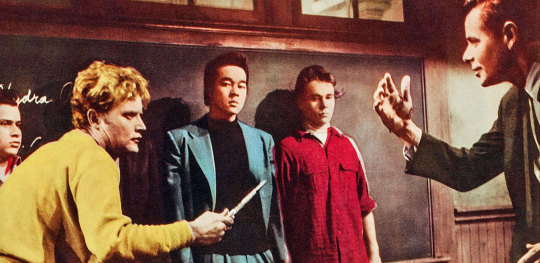
View On WordPress
0 notes
Photo

George Joseph Herriman (August 22, 1880 – April 25, 1944) was a cartoonist known for the comic strip Krazy Kat. More influential than popular, Krazy Kat had an appreciative audience among those in the arts. Gilbert Seldes' article "The Krazy Kat Who Walks by Himself" was the earliest example of a critic from the high arts giving serious attention to a comic strip. The Comics Journal placed the strip first on its list of the greatest comics of the 20th century. His work has been a primary influence on cartoonists such as Will Eisner, Charles M. Schulz, Robert Crumb, Art Spiegelman, Bill Watterson, and Chris Ware. He worked in the newspaper industry as an illustrator and engraver. He moved on to cartooning and comic strips—a medium then in its infancy—and drew a variety of strips until he introduced his most famous character, Krazy Kat, in his strip The Dingbat Family. A Krazy Kat daily strip began and the strip appeared on Sundays. It was noted for its poetic, dialect-heavy dialogue; it's fantastic, shifting backgrounds; and its bold, experimental page layouts. #africanhistory365 #africanexcellence https://www.instagram.com/p/Chjw4knOMuZbjU4wVtas3MImz1FqoBbq3wyc2g0/?igshid=NGJjMDIxMWI=
0 notes
Photo
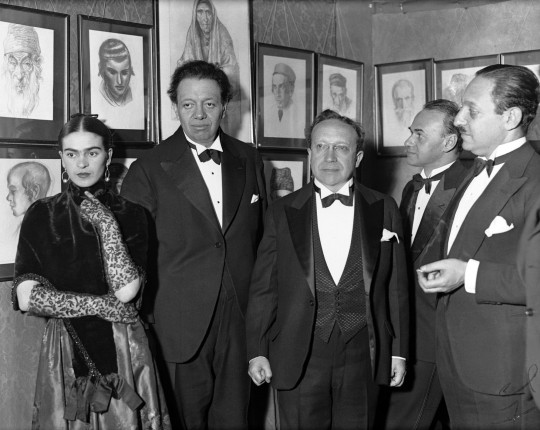
Frida Kahlo and Diego Rivera at the Menorah Artists' and Writers' Committee, May 10, 1933. Rivera, the principal speaker at the Menorah Journal Dinner at the Hotel Park Crescent, expressed outrage at being barred from completing a mural at Rockefeller Center because he included in it an image of Lenin.
Before the dinner there was an exhibit of the work of New York artist Lionel Reiss. It was held with the intention of disapproving the Nazi Aryan theory, showing that the characteristics of the Jews are as varied as the nations in which they live. Left to right: Kahlo; Rivera; Henry Hurwitz, editor of the Menorah Journal; Gilbert Seldes, journalist; and Lee Simonson of the Theater Guild.
Photo: Bettman/Corbis/Getty Images
#New York#NYC#vintage New York#1930s#Diego Rivera#Frida Kahlo#Rockefeller Center#Rivera mural#Henry Hurwitz#Gilbert Seldes#Lee Simonson#Nazism#Menorah Journal#Lionel Reiss#anti-Semitism
66 notes
·
View notes
Text

From "The Seven Lively Arts", by Gilbert Seldes. Copyright, 1924, by Harper & Brothers.
2 notes
·
View notes
Photo

#ThrowbackThursday Gilbert Seldes has this to say about our fellow, Keaton in his 1937 book, ‘The Movies Come From America’:
A half-dozen imitators, their original talent wasted because they developed nothing and imitated everything, only added to Chaplin's fame. Two men definitely rose to separate distinction—Buster Keaton and Harold Lloyd. Of the two, Keaton had the greater imagination, for while he had only one manner—the dead pan, the inexpressive countenance with which he faced adventures with men, animals and machines—almost always the victim of his surroundings, but never overcome by them—there was always something endearing in Keaton's comedy, a kind of simplicity and softness.
#throwback thursday#buster keaton#tbt#gilbert seldes#charlie chaplin#harold lloyd#silent era#silent movies#vintage hollywood#critic#critique#tibks#the international buster keaton society#buster keaton society#the damfinos#damfino#damfamily
21 notes
·
View notes
Quote
"The suggestion that persecution in any way proves greatness is simply absurd. The world has persecuted enough of its great men to justify a little hesitation and a deal of humility before it persecutes anyone else; but it has also persecuted so many criminals, and derided so many fools, that proof by persecution ceases to be admirable. Two thieves were crucified, and only one Christ."
Gilbert Seldes, The Stammering Century
1 note
·
View note
Text
Here we have the beginnings of a possible feud within radio itself. Facsimile and frequency modulation can coexist — that is to say, you can actually receive your FM radio programs while your facsimile is being printed. Television is rather exclusive. It does, of course, carry its own voices, its sound; but most of the space in its wave band it needs for itself. At the present moment, television works by modulation of amplitude; but there is always a possibility that it also may be transmitted by modulation of frequency. Then, perhaps, these two will lie down in peace together.
The professional people say this: that you cannot interest the public in two new developments, both connected with radio, at the same time. About that I do not know. Being myself associated with television, and prejudiced in its favor, I believe that the development which offers new kinds of programs is going to be more important to the public than that which offers a new kind of transmission of programs.
But the history of invention shows that new engines create new possibilities — the photographic film, electric light, the photoelectric cell, have all had their effects on the arts; and a new way to transmit whatever the ingenuity of man devises may bring new materials and new methods into play.
These things also are for the future.
-- Radio for the Future, Gilbert Seldes, The Atlantic, 1941
Fave part of this article is how uncanny it is to read television being discussed so firmly as a new kind of development within radio.
#radio#radio history#radio for the future gilbert seldes#1941#rip to the 'professional people' being vagued here i guess
1 note
·
View note
Photo

Podcasting in 1949
5 notes
·
View notes